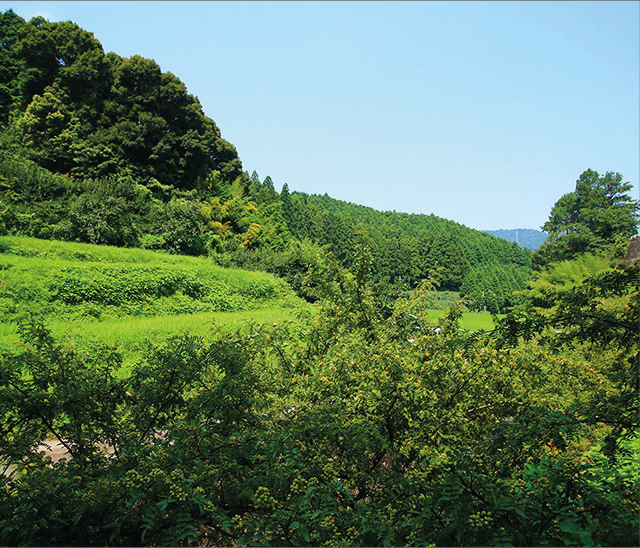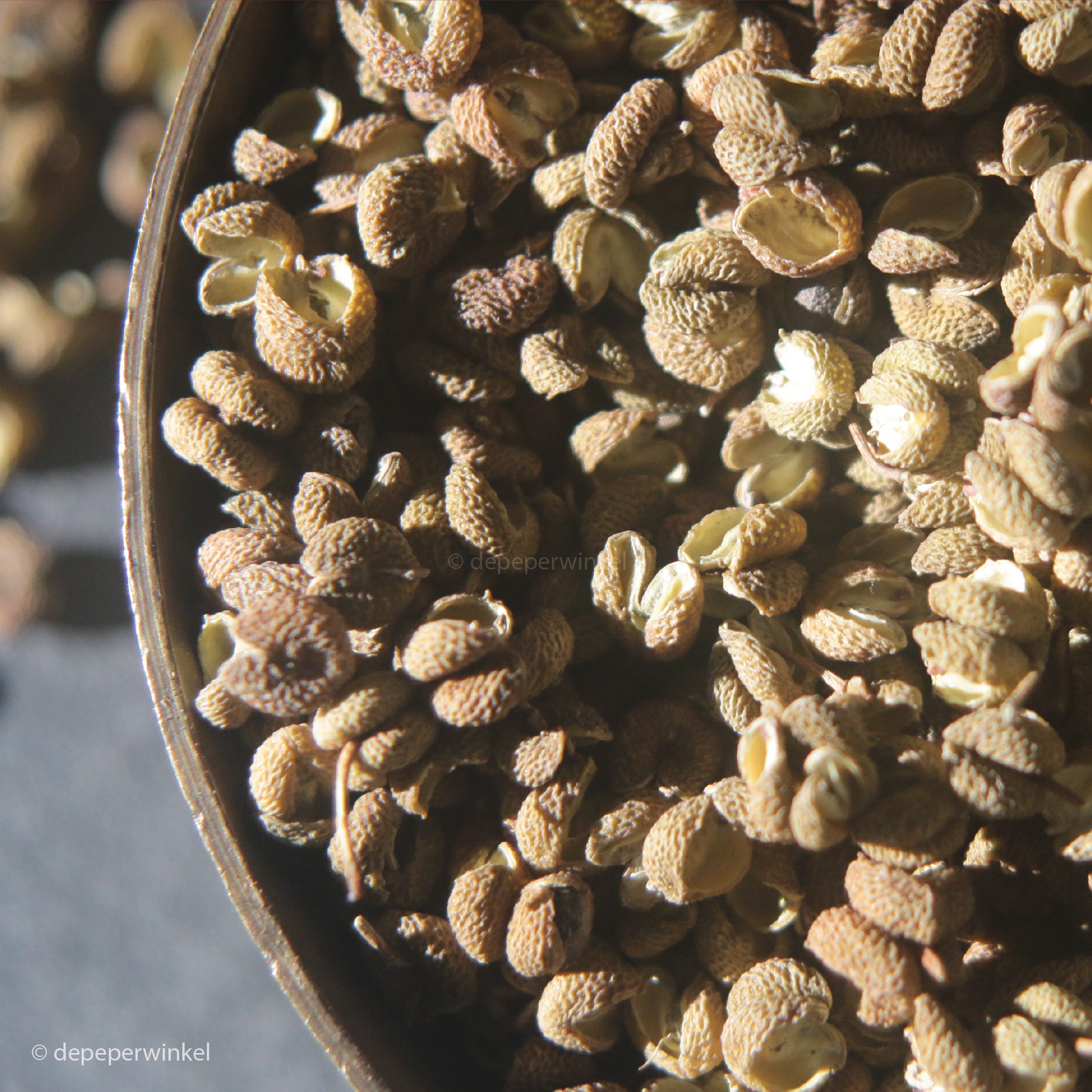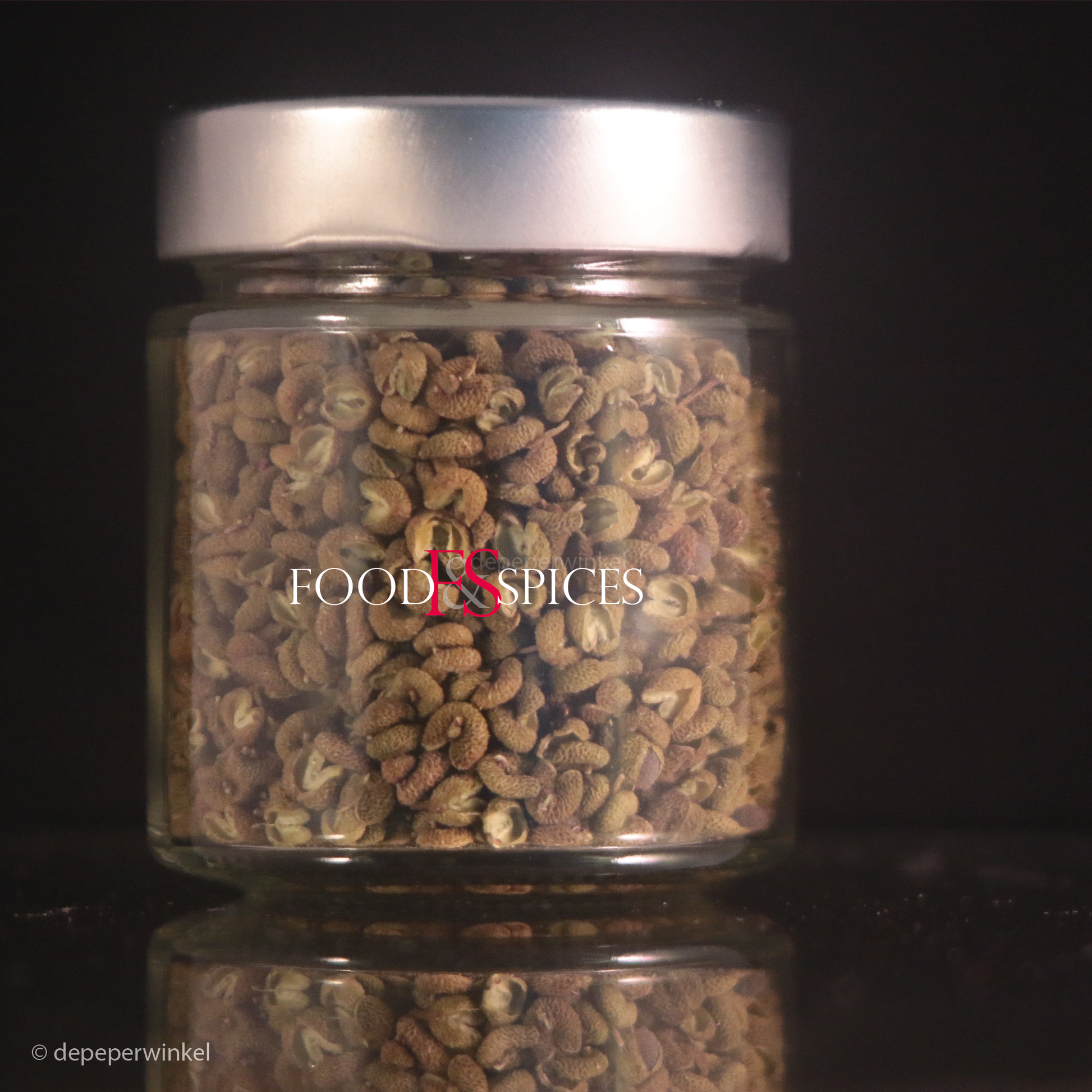depeperwinkel
Green sansho <tc>pepper</tc> - Sanshō-no-mi
Green sansho <tc>pepper</tc> - Sanshō-no-mi
Temporarily out of stock
Unable to load availability for pickup
Our sanshō or sansho
No longer available. Since 2024, the price of sansho has risen dramatically, and the number of suppliers has increased. Sansho from Japanese soil has shrunk significantly, and the supply is limited. Consumer prices of the equivalent Prices of €1,500 and higher (!) per kilogram are no longer unusual. The purchase price has risen by another 40% in the past six months. We have therefore put sansho sales on hold, pending increased availability and more reasonable prices. We are sorry.
The sanshō, or Japanese
Sanshō
It is now a prominent spice, even one of the few spices used in Japanese cuisine. The unripe green berries are called sanshō-no-mi. These are sharper and more aromatic than red sanshō. The first green sanshō appear on the market starting in May, and red ones in October.
One of the first preparations using sanshō is described in the Okusa cookbook from the fifteenth century. It was an eel dish. Since then, eel in Japan has always been prepared with sanshō, or in extreme cases, with shichimi tõgarashi (seven-spice powder).
In Japan, people eat the berries (fresh and dried), the leaves, and the young shoots. This is not the case in most other Asian countries. The unripe green berries are very popular for their flavor and sharpness. While the red berries are more expensive, they are not as highly regarded by many because of their more pronounced citrus flavor as the green ones, which are called sanshō-no-mi.
In Japanese cuisine, spices are generally rarely used. Sanshō is almost always used. When a Japanese person uses "our" black
Our sanshō
The unique sharpness experience of sanshol
Characteristic of all Zanthoxylum
Ripe berries are sharper than unripe ones.
The tingling sensation is accompanied by a mild numbness, jokingly compared to tasting a 9-volt battery. A single berry is enough to experience that! This somatosensation, stimulation by touch, has been used for centuries as an anesthetic in traditional Asian medicine. Its effects are very complex and the subject of extensive studies. Hydroxy-α-sanshol, in particular, is said to cause the tingling, and there are certain parallels with the pungency experienced by capsaicin, the pungent substance in chili
Smell and taste
Sanshō is a member of the citrus family, which you experience in its aroma, a blend of grapefruit, lemon, lemongrass, and rosewood. In between, you taste and smell – very faintly – mint. Characteristic of all Zanthoxylum
- linalyl acetate, responsible for a pleasant citrus, bergamot and lavender scent,
- limonene, the scent of lemon peel,
- citral, the scent of grapefruit,
- geraniol, rose scent,
- geranyl acetate, lavender fragrance.
- β-pinene, pine resin, and
- linalool, responsible for the scents of rosewood and coriander
A ripe berry contains significantly more linalool, geraniol, and geranyl acetate than a green berry. The aromas develop during ripening.
Combinations
Sanshō
Usage
Besides dishes featuring freshwater eel—don't forget how severely depleted eel stocks are—sanshō is delicious with white and red meat, duck, fish and shellfish, squid, and desserts, especially those featuring chocolate. Sanshō is a key ingredient in Shichimi Togarashi, Japan's seven-spice spice, and is used in Japanese noodle and miso dishes.
Features:
- 100% dried fruits of the Zanthoxylum piperitum
- premium quality: max 5% seed
- origin: Wakayama, Japan
Assortment
- available in glass, stand-up pouch and test tube
- glass jar contains 30 grams
- stand-up pouches with a capacity of up to 30 to 300 grams
- available in 10 ml test tube
- larger quantities on request
Gift wrapping
- The jar is available in a tasteful gift packaging, consisting of a cube box filled with black tissue paper.
- For an overview of our gift packaging, please refer to the gift packaging section.
General advice
- sanshō
pepper is the Szechuanpepper for refined cuisine, and can be used both cold and hot - use sanshō sparingly, and add it after or at the end of cooking
- Give the sanshō berries time to absorb moisture so that the flavor can develop optimally.
Save:
- save your sansho
pepper in closed packaging - preferably store in a dark, dry and cool place
- best before (n.v.t.)
Stock item
Due to serious delivery problems, our stock is (almost) exhausted.We are currently awaiting positive news from Japan. If you would like to be kept informed, please let us know. s.v.pto know.
Share







